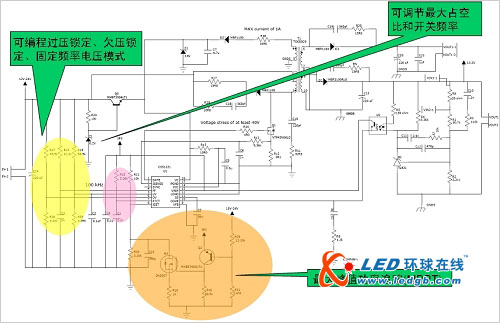Commonly used sources in the general lighting market include incandescent lamps, compact fluorescent lamps (CFLs), linear fluorescent lamps, high-intensity discharge lamps (HIDs), and emerging high-brightness light-emitting diodes (HB LEDs). With the improvement of people's awareness of environmental protection, the general lighting market has also become an important goal of the industry to improve energy efficiency.
In terms of total efficiency (input output to power ratio, lm/W), incandescent lamps have relatively low energy efficiency among different general illumination sources. The standard 60 W incandescent lamp has an energy efficiency range of 10 to 13 lm/W. (The total output is 600 to 800 lm), while the CFL's typical energy efficiency is 55 to 60 lm/W (the net energy efficiency of a 55 lm/W CFL luminaire is only between 28 and 50 lm/W due to optical loss). Other light sources, such as metal halide HID lamps, have an energy efficiency of about 80 lm/W, but there is a large amount of loss in the light projection path.
In comparison, LEDs are becoming more and more energy efficient. The industry's most recent white LED development capability has reached 132 to 136 lm/W and color temperature (4,500-6,000K). In fact, LED's low voltage, small volume, directional light, solid state devices, long working life and other advantages are particularly attractive for general lighting.
LED general lighting system requirements and challenges
For the application of LEDs in general illumination, it is necessary to analyze the requirements from a system perspective. In general, LED general lighting systems involve LED light sources (compact and efficient, providing a wide range of colors and output power), power conversion (efficient conversion of AC wall outlets, batteries, solar cells to safe low-voltage DC) Power), control and drive (using electronic circuits to regulate and control LEDs), thermal management (node ​​temperature control is very important, need to analyze heat dissipation for longer working life) and optics.
To develop an energy-efficient LED general lighting solution, these requirements are very important. Among them, this article mainly discusses the control and driving of LEDs, and also discusses efficient power conversion problems in the following examples of solar-powered street lighting.
For LED drivers, the main challenge is the nonlinearity of the LEDs. This is mainly reflected in the fact that the forward voltage of the LED will vary with current and temperature. The forward voltage of different LED devices will be different. The "color point" of the LED will drift with current and temperature, and the LED must meet the requirements of the specification. Work within the scope to achieve reliable work. The main function of the LED driver is to limit the current within the operating conditions, regardless of the input conditions and the forward voltage.
For the LED driver circuit, in addition to constant current regulation, there are other key requirements. For example, if LED dimming is required, pulse width modulation (PWM) dimming is usually used; and the typical PWM frequency for LED dimming is 1 to 3 kHz. In addition, the power handling capability of the LED driver circuit must be sufficient. It is robust and can withstand a wide range of fault conditions and is easy to implement.
General lighting power conversion and LED driver example
Depending on the application, LEDs may be powered by different power sources, such as AC lines, solar panels, 12 V car batteries, DC power supplies or low voltage AC systems, or even alkaline and nickel based batteries or lithium ion batteries.
1) Powering the LED with a wide input range DC-DC power supply
Many high-brightness LED applications operate in power supplies up to 40 VDC, such as mobile lighting, landscape and road lighting, automotive and traffic lighting, solar-powered lighting, and showcase lighting.
Taking solar panel power as an example, it is very important to improve the photoelectric conversion energy efficiency of solar panels (currently only about 30%). The voltage-current (VI) characteristic curve of a solar panel exhibits nonlinearity and variability, and it is very difficult to extract the maximum amount of electrical energy therefrom. This requires the solar LED street light's charge controller and other related electronic circuits (usually implemented with a microcontroller) to maximize energy efficiency to maximize the benefits.

Figure 2: Schematic diagram of solar panel charging control application of ON Semiconductor CS51221 controller
The latest controllers that support Maximum Peak Power Tracking (MPPT) provide compensation for the changing V/I characteristics of solar cells, optimize solar cell power output, increase energy efficiency, and charge batteries to optimize power. Specifically, when we can't actually change the load, the MPPT function causes the solar cell to "think" that the load is changing; in this way, the MPPT "spoofs" the solar panel to output different voltages and currents, allowing more power to be input to Battery.
ON Semiconductor's CS51221 Enhanced Voltage Mode PWM Controller for Solar Panel Battery Charge Control Applications (see Figure 2) supports maximum peak power tracking with an input voltage of 12 to 24 V and an output of 12 V2 A with adjustable Protection features such as pulse-by-pulse current limit, input undervoltage lockout, and output overvoltage lockout. This controller provides an auxiliary input for remote transmission and monitoring; it can accommodate solar panel applications up to 90 W.